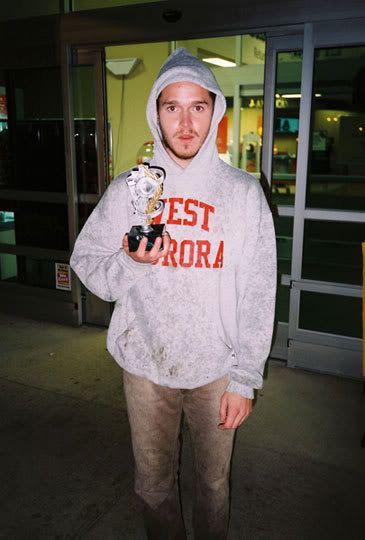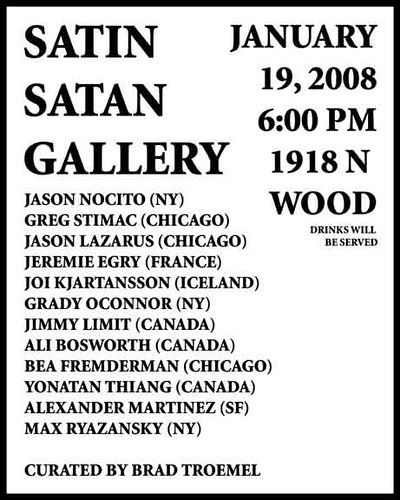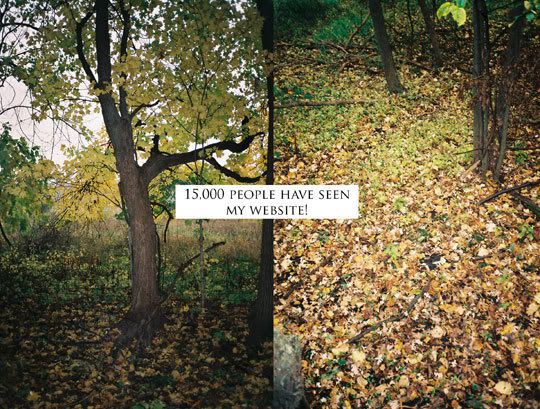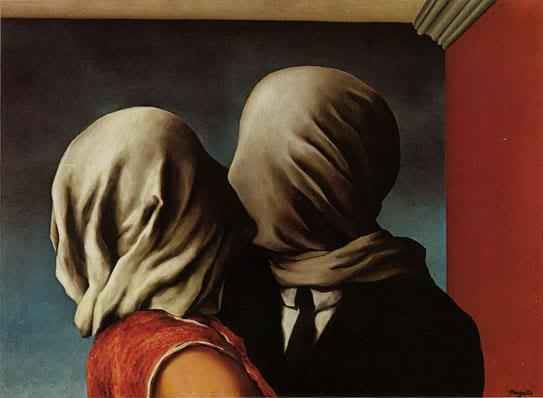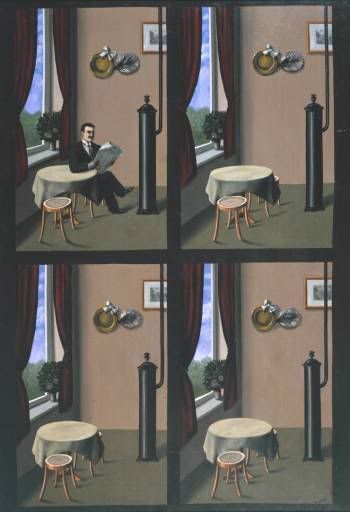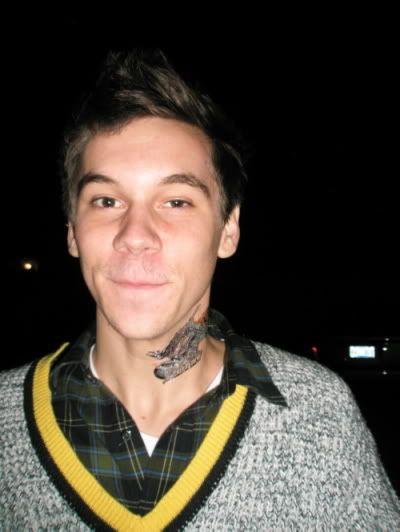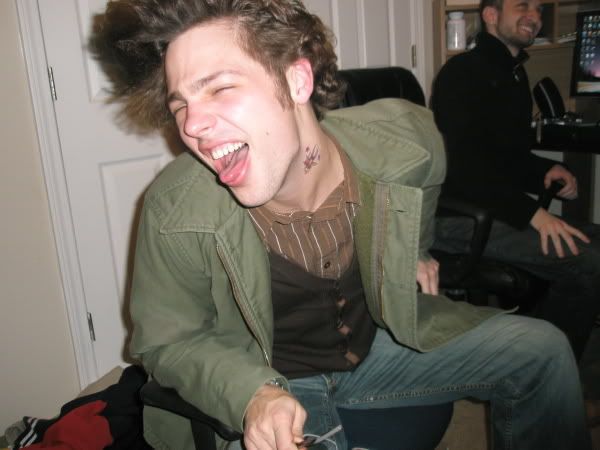Topics Covered:
ways in which Brad Troemel is not John Shade,
Juggalos as advocates for family values,
art school economics,
the wisdom of "Big Brother" (the song, not the sinister distopian figurehead),
self-affirmation
ways in which Brad Troemel is not John Shade,
Juggalos as advocates for family values,
art school economics,
the wisdom of "Big Brother" (the song, not the sinister distopian figurehead),
self-affirmation
The foreword to Vladimir Nabokov's novel, Pale Fire, (which, incidentally, is also the namesake of this blog) concludes with a rather pithy observation on the limits of self-representation through art: "for better or worse, it is the commentator who has the last word." Of course, it also helps if your subject of interpretation is dead and unable to contest your assertions about their work.
In the case of this Pale Fire the commentator would be me. However, instead of trying to summarize Nabokov's work, which would hardly do it justice, or attempting to sum up the interesting issues it raises about the concept of the "artistic persona", which wouldn't make much sense to those who haven't read the book, I decided to attempt something which would complicate some of the major ideas and put them into practice. Such is the inspiration of the interview you are about to read. Whether or not it succeeded in its original aim, I'm not sure, but I learned a lot about Insane Clown Posse fans and educational financing.
Brad Troemel is not dead, nor is he a character in a perversely metafictional narrative entirely of my own creation. He is a young and talented photographer currently based out of Chicago. From what I can see he is also very busy. Aside from school and producing new work he also maintains a website where you can browse through archives of his previous projects and a relatively informal blog where he habitually hypes the artists he loves and occasionally self-promotes (though usually by association.) Carrying on along those lines, Brad curated a show of some of his favorite photographers at the Satin Satan Gallery (for details see poster below.) Additionally, "Glacier", his upcoming solo show about "land displacement and the suburb's relationship with the natural world", will open at Reuben Kincaid Project Space (3219 S Morgan, Chicago, IL) on March 8th and carry on through April 12th. It will feature never before seen work.
I contacted Brad because his work, even apart from its aesthetic quality, almost always seems to hint at an engagement with aspects of the "artistic persona". In our correspondence he never raised any major objections to my interpretation, which is not to say there were no surprises in store. I sent him groups of questions, he responded, and we even bonded in a touching montage sequence (not depicted here.) These are the results:
In the case of this Pale Fire the commentator would be me. However, instead of trying to summarize Nabokov's work, which would hardly do it justice, or attempting to sum up the interesting issues it raises about the concept of the "artistic persona", which wouldn't make much sense to those who haven't read the book, I decided to attempt something which would complicate some of the major ideas and put them into practice. Such is the inspiration of the interview you are about to read. Whether or not it succeeded in its original aim, I'm not sure, but I learned a lot about Insane Clown Posse fans and educational financing.
I contacted Brad because his work, even apart from its aesthetic quality, almost always seems to hint at an engagement with aspects of the "artistic persona". In our correspondence he never raised any major objections to my interpretation, which is not to say there were no surprises in store. I sent him groups of questions, he responded, and we even bonded in a touching montage sequence (not depicted here.) These are the results:
1. Are you down with the clown?
How familiar were you with the Juggalo subculture before you arrived at their "Gathering"? Do you see your photo series as an objective portrayal of their activities or were you trying to get a particular critical perspective about their lifestyle across (and if so, what)? Were most of them eager to pose or sort of "perform" (i.e. act the part of a hardcore Juggalo) when they saw your camera? Were there some people there who didn't really fit your expectations as Juggalos/photographic subjects? If so, what was your reaction to them?
I began researching the ICP and, more importantly, their cult of followers, the Juggalos, in the winter of 2006 in Boston. I read everything Googleable about them- scouring their website, fansites, personal essays. Then I began personal correspondences with individual Juggalos on Myspace. The range of intellectual explanations for the Juggalos was pretty astounding. I had college graduates send me their senior year thesis papers on being a Juggalo to the expected knee-jerk 16 year old reactions. This turned out to be a fairly accurate representation of a complicated group of people.
My camera was either met with indifference or enthusiasm. No one was opposed to being photographed. I think there were a couple reasons for this. They didn't expect someone who wasn't as outsider to be there. It's not in vogue to be a Juggalo like it is to be a punk rocker, so the idea of being a "poser" is one that really doesn't exist the way it does in other cultures. You're either in or you're out and if you're in with the Juggalos, you're all the way in. Neck tattoos, clothing, hair, face paint in public, the whole thing. No one at the Gathering was there to find out what it was about, everyone there was a die hard fan ready to connect with other die hards from all across the country. Many of the Juggalos had saved up all year just to attend the event so the idea of an outsider throwing down that much money (Editor's Note: tickets are $150 not including camping fees) to be with them for a week in the heat was pretty unheard of. The Gathering isn't a well known event like Ozzfest, which limits the scope of people willing to go even further. There are mainstream acts that play (like the Yin Yang Twins) but if you're a Yin Yang Twins fan you probably aren't going to be willing to live with Juggalos in the middle of a secluded forest for a week just to see those 2 or 3 mainstream acts play. Because of my attendance alone, I was by default a Juggalo for a week.
I think the Juggalos were willing to be photographed because they have already objectified themselves. With their whole look, they've made themselves spectacles to look at. Unlike a woman's cleavage, which you're both supposed to look at and are shunned [if] caught doing so, I was commended for paying extra attention to what my attention was supposed to be brought to. The idea of being a spectacle or being photo-worthy is appealing to them because it posits them against the mainstream. With t-shirts like "the most hated band/fans in the world", magazines reviewing ICP as the least talented band of all time, and being social outcasts in general, gaining attention by being the "other" is something they've came to accept and embrace. They've designated themselves as being outside of the mainstream as much as the mainstream has told them that. It is a source of pride that is nurtured through direct attention, or in this case my camera.
In my personal experience growing up with Juggalos I knew better than to think they'd look a certain way. Juggalos from my teenhood were ravers, nerds, anime-obsessives, whiggers, thugs, goths, Hot Topic mall punks, angsty suburbanites, and rednecks. The only people in attendance who really shocked me were the large number of families, babies, and people older than 40 who attended. Many whole families came to the event with each other, would smoke weed and drink with each other and would meet up with other families between performances to hang out in their campers. Babies and small children were everywhere too. The Gathering is an event all about comradery and family. "FAM - UH - LEE" was probably the most re-occuring chant of the week and was likely to break out anywhere- halfway through a band's set, prior to a performance, during a tea-cup ride, in the middle of the night from the top of a hill. You could always hear it and a lot of times people would actually show it, too. Don't get me wrong, it wasn't Haight St. in 1968 or anything, they weren't growing vegetables for one another but the amount of sex, willingness to share whatever drug they were doing, and overall respect for one another as being equals was definitely there. It was kind of refreshing in a weird way, coming from hipsterdom where the only thing that brings everyone together is the constant drive to out-do one another or to find something first. I don't think bringing a child to a place where there are titties and crack smoke is a good idea, but I understand the intent of the gesture- this is my family, and you are my family.
2. Is there such a thing as pre-meditated insanity?
Insane Clown Posse are a group which has gone to considerable lengths to build up a specific image and even a kind of mythology around themselves (by that I'm referring to the supposed story arc of the "Joker Card" albums among other things) which perhaps even they don't take entirely seriously though their typical fan certainly seems to. For all of the work that went into creating this very marketable and somewhat elaborate persona, Violent J and Shaggy 2 Dope are conspicuously absent from your pictures. Would you say that the men themselves are relatively unimportant compared to this idea of them to which all of the fans in your pictures are reacting? From your experience, why do you think people identify with this band? Was your deliberate exclusion of ICP in any way intended as a challenge to their powers of self-representation? If so, how?
In my research and personal experience with the Insane Clown Posse I think they're talentless crooks. However, what they've started and their fans have created has far surpassed them. Juggalos are united by Juggalos, not by the Insane Clown Posse. The Insane Clown Posse as a subject of artistic or critical analysis is an easy target. Juggalos are an interesting and complicated group of people full of contradictions and energy that I think is best expressed visually, not through words. In the case of the Gathering of the Juggalos and the Juggalo community as a whole, though the ICP does benefit financially, the ends justify the means. Being a Juggalo and having other Juggalos to talk to gives so many people friends and happiness that it doesn't matter if they buy some CD critics despise once a year.
3. How can art be free if it's been institutionalized?
You recently began attending art school and it seems from what I've read on your blog this was kind of a big decision for you. You even made a post where you asked some talented photographers to write a brief summary of their thoughts on such institutions and interestingly the responses were rather mixed (as far as being for/against it as a helpful use of time and money). How have you found it so far? Do you feel like you've become more self-conscious about your position as an "artist" since becoming a student? And now that you've delved further into the officially sanctioned art institutions as a curator for the Satin Satan show do you think the way you evaluate art has changed at all now that you may have to justify your tastes in a more formalized fashion?
I'll try to answer it putting as few people to sleep as possible. It's easier to word this in "you" than "I" so forgive me if I sound like a furor, everyone. haha.
There are two types of art school you can attend: the type that teaches you the technical aspects of design or the type that teaches you how to yap about your own work. I've went to a couple that have taught me how to yap and occasionally how to think. Now, if you attend the type that teaches you how to yap there are two states of mind you can have for your next four years of life. You can either try to surf on top of the wave or fall into the sea of ambitionless indifference. Being one of these two people isn't so much of a choice as much as it is a plain fact of your existence. It's not as though people choose to sit around smoking chron all day playing video games in their dorms wasting their parents $40 G's a year over being a go-getting artist, they just are the way they are. These boring wastes can be a burden on people actually looking to learn or accomplish something over the course of their education, to look around and see nothing but mindless idiots wearing America Apparel scraping by assignment to assignment is pretty depressing. The school won't kick them out for sucking, either. My biggest bummer was that I first came to school thinking it would be a cornucopia of brilliantly talented young people waiting to grab the world by its balls. This turned out to not be the case. Jim Dow explained fine art school's unwillingness to lay down the law on students and say "hey, less gonja, more work" in a beautifully simple and cynical way: the 40 kids sitting around by the entrance of the art school all the time doing nothing are paying for the 5 kids' scholarships inside who actually are. Art school is just a pre-cursor to the way the art world works. The ones who will themselves to success end up succeeding, the rich and mildly talented go their four years and still can do whatever they want afterwards and the talentless middle class ones get a job bartending in Williamsburg. The exception being the talented shy ones who sometimes slip through the cracks and have to get a bartending job too.
Think about art school scholarships for a while and you'll find another direct link into the art market. Whether you go to school for free or spend $30,000 in yearly tuition, there is no difference in the quality of education afforded to you. Scholarships are incentive to attend, not a reward for talent. Talent is never rewarded without something in return. Whenever someone is awarded money by an institution the purpose of that award is as much about helping them out as it is strengthening the credentials of the institution by being able to say they had a hand in their success, and this goes for everything from museum collections to the Nobel Peace Prize. What does an art school stand to receive from giving a 17 year old a $30,000 opportunity? Much more than the money they are offering him. All it takes is one Nan Goldin for a whole school to make a great sales pitch to all those students who will pay the full price. This is where they make their money back- one hundred fold. Students are financial bets just like artists in Chelsea are.
Once you become aware that you're being used for your name or your money, it's time to start using the school. This means trying to get grants and using the usually fantastic and free facilities as much as possible. And those few, few smart teachers that aren't brain dead or senior citizens coasting on their tenure, get to know them. Make friends with the good teachers because they're probably really awesome people. At this point, the purpose of art school is for me to get my BFA so I can get my MFA so I can teach. You didn't think I'd be so critical then not try to give it a shot myself, would you?
My most important interactions and recommendations have been in bars and parties talking to people who really want to talk to me and who I feel comfortable with. Art school critiques are rarely productive because it requires every person to want to talk and to know what they're talking about. The way school is set up, very few people know anything though everyone feels pressure to say something. This usually leads to suicide-tempting conversations over what camera something should have been shot with or whether taking a picture of a poor person is exploitative. The moral of the story on art school is that you can either own the school or it can own you. By the way, this was all about art school BFA's. MFA's are a whooooolllleee different game.
Every artist should be hyping every artist they love. It's so easy to give people props these days that it's almost a diss not to. Start a blog, throw a link up on your site, put on a show in your house. I interned at a gallery for a second and what I learned was that there really wasn't anything to learn in running a not for profit. Choose the people whose work you like, get the work, buy a couple cases of beer, and have fun. Kanye said "If you admire somebody you should go ahead and tell um / People never get the flowers while they could smell um". Satin Satan is an homage to Jason Lazarus's now-defunct Chicago DIY gallery, Jesus Chrysler. I know a bunch of talented up-and-comers and I want to hook them up in a show with more established artists as a way of bringing them to the next level. I like that it's a house and not an "official" gallery on Peoria St. or whatever. I always thought the atmosphere of galleries were kind of like funerals, solemn reflections on the present compared to history, when they should be wild drunken celebrations complete with nudity and beer bongs. Maybe that's just because I'm Irish. Or maybe because, as Beazy would say, I'm a "bro in disguise". The first show is a straight forward photo show and the next one will be too. I'm just getting a feel for how to do all this, so it will get better and better. Eventually I'll have more ambitious things in the space like installations, sculptures and performances but for now I'm just taking baby steps.
4. Excuse me, are you the Brad Troemel?
In a few of your recent projects you seem to be self-consciously projecting the persona of yourself as an artist. I'm thinking in particular of a photo series called "Special" and your Craigslist add for a person to act as your muse. In Special you juxtapose personal achievements such as shooting for Vice, taking graduate courses, and receiving a grant, all of which establish your sort of "legitimacy" as a serious artist, with the rather arbitrary achievement of climbing a tree. This could come off as both narcissistic in a "hey, look what I can do" way and self-deprecating in a "yeah, these things sound impressive, but they only really have as much value as you attribute to them" way. How do you expect people to view the work and yourself? Is it viable to use art to establish the importance of other art or does the vindication need to come from elsewhere? How has your quest for a muse gone?
If it's cool, I'm not finished with my Muses project yet so I'm going to just discuss Special.
I think you definitely hit on one of the ideas I initially had with that work in your description of it switching between being both narcissistic and self-depracating. I also like the idea of creating a work of art that is a resume as a sort of criticism on the way prestige is earned in art settings. It seems that people get shows based on their resume or the show they were in previously more often than the merit of whatever their new work is. They might as well not show the work, but hang their resume on the wall so people can see why they're actually there. If I were to present Special in a gallery, I would alter it to include another tree diptych which would say "I have a solo show in (insert whatever gallery it was in) Gallery!". The final part of the project where I go to Walmart would be replaced by an oversized trophy in the middle of the room with a banner hanging above it that said "CONGRATULATIONS, BRAD TROEMEL, ON YOUR SHOW IN ________ GALLERY!".
5. And finally, what fun would an interview loosely based around the concept of the artistic persona be without a post-modern role-reversal twist ending?
Feel free to pose any questions you would like to me.
TO BE CONTINUED: the thrilling resolution to this sequence of questioning will be the subject of my next, companion post "Pale Fire: a Manifesto". Look forward to it!
Until then, enjoy the jam:
How familiar were you with the Juggalo subculture before you arrived at their "Gathering"? Do you see your photo series as an objective portrayal of their activities or were you trying to get a particular critical perspective about their lifestyle across (and if so, what)? Were most of them eager to pose or sort of "perform" (i.e. act the part of a hardcore Juggalo) when they saw your camera? Were there some people there who didn't really fit your expectations as Juggalos/photographic subjects? If so, what was your reaction to them?
I began researching the ICP and, more importantly, their cult of followers, the Juggalos, in the winter of 2006 in Boston. I read everything Googleable about them- scouring their website, fansites, personal essays. Then I began personal correspondences with individual Juggalos on Myspace. The range of intellectual explanations for the Juggalos was pretty astounding. I had college graduates send me their senior year thesis papers on being a Juggalo to the expected knee-jerk 16 year old reactions. This turned out to be a fairly accurate representation of a complicated group of people.
My camera was either met with indifference or enthusiasm. No one was opposed to being photographed. I think there were a couple reasons for this. They didn't expect someone who wasn't as outsider to be there. It's not in vogue to be a Juggalo like it is to be a punk rocker, so the idea of being a "poser" is one that really doesn't exist the way it does in other cultures. You're either in or you're out and if you're in with the Juggalos, you're all the way in. Neck tattoos, clothing, hair, face paint in public, the whole thing. No one at the Gathering was there to find out what it was about, everyone there was a die hard fan ready to connect with other die hards from all across the country. Many of the Juggalos had saved up all year just to attend the event so the idea of an outsider throwing down that much money (Editor's Note: tickets are $150 not including camping fees) to be with them for a week in the heat was pretty unheard of. The Gathering isn't a well known event like Ozzfest, which limits the scope of people willing to go even further. There are mainstream acts that play (like the Yin Yang Twins) but if you're a Yin Yang Twins fan you probably aren't going to be willing to live with Juggalos in the middle of a secluded forest for a week just to see those 2 or 3 mainstream acts play. Because of my attendance alone, I was by default a Juggalo for a week.
I think the Juggalos were willing to be photographed because they have already objectified themselves. With their whole look, they've made themselves spectacles to look at. Unlike a woman's cleavage, which you're both supposed to look at and are shunned [if] caught doing so, I was commended for paying extra attention to what my attention was supposed to be brought to. The idea of being a spectacle or being photo-worthy is appealing to them because it posits them against the mainstream. With t-shirts like "the most hated band/fans in the world", magazines reviewing ICP as the least talented band of all time, and being social outcasts in general, gaining attention by being the "other" is something they've came to accept and embrace. They've designated themselves as being outside of the mainstream as much as the mainstream has told them that. It is a source of pride that is nurtured through direct attention, or in this case my camera.
In my personal experience growing up with Juggalos I knew better than to think they'd look a certain way. Juggalos from my teenhood were ravers, nerds, anime-obsessives, whiggers, thugs, goths, Hot Topic mall punks, angsty suburbanites, and rednecks. The only people in attendance who really shocked me were the large number of families, babies, and people older than 40 who attended. Many whole families came to the event with each other, would smoke weed and drink with each other and would meet up with other families between performances to hang out in their campers. Babies and small children were everywhere too. The Gathering is an event all about comradery and family. "FAM - UH - LEE" was probably the most re-occuring chant of the week and was likely to break out anywhere- halfway through a band's set, prior to a performance, during a tea-cup ride, in the middle of the night from the top of a hill. You could always hear it and a lot of times people would actually show it, too. Don't get me wrong, it wasn't Haight St. in 1968 or anything, they weren't growing vegetables for one another but the amount of sex, willingness to share whatever drug they were doing, and overall respect for one another as being equals was definitely there. It was kind of refreshing in a weird way, coming from hipsterdom where the only thing that brings everyone together is the constant drive to out-do one another or to find something first. I don't think bringing a child to a place where there are titties and crack smoke is a good idea, but I understand the intent of the gesture- this is my family, and you are my family.
2. Is there such a thing as pre-meditated insanity?
Insane Clown Posse are a group which has gone to considerable lengths to build up a specific image and even a kind of mythology around themselves (by that I'm referring to the supposed story arc of the "Joker Card" albums among other things) which perhaps even they don't take entirely seriously though their typical fan certainly seems to. For all of the work that went into creating this very marketable and somewhat elaborate persona, Violent J and Shaggy 2 Dope are conspicuously absent from your pictures. Would you say that the men themselves are relatively unimportant compared to this idea of them to which all of the fans in your pictures are reacting? From your experience, why do you think people identify with this band? Was your deliberate exclusion of ICP in any way intended as a challenge to their powers of self-representation? If so, how?
In my research and personal experience with the Insane Clown Posse I think they're talentless crooks. However, what they've started and their fans have created has far surpassed them. Juggalos are united by Juggalos, not by the Insane Clown Posse. The Insane Clown Posse as a subject of artistic or critical analysis is an easy target. Juggalos are an interesting and complicated group of people full of contradictions and energy that I think is best expressed visually, not through words. In the case of the Gathering of the Juggalos and the Juggalo community as a whole, though the ICP does benefit financially, the ends justify the means. Being a Juggalo and having other Juggalos to talk to gives so many people friends and happiness that it doesn't matter if they buy some CD critics despise once a year.
3. How can art be free if it's been institutionalized?
You recently began attending art school and it seems from what I've read on your blog this was kind of a big decision for you. You even made a post where you asked some talented photographers to write a brief summary of their thoughts on such institutions and interestingly the responses were rather mixed (as far as being for/against it as a helpful use of time and money). How have you found it so far? Do you feel like you've become more self-conscious about your position as an "artist" since becoming a student? And now that you've delved further into the officially sanctioned art institutions as a curator for the Satin Satan show do you think the way you evaluate art has changed at all now that you may have to justify your tastes in a more formalized fashion?
I'll try to answer it putting as few people to sleep as possible. It's easier to word this in "you" than "I" so forgive me if I sound like a furor, everyone. haha.
There are two types of art school you can attend: the type that teaches you the technical aspects of design or the type that teaches you how to yap about your own work. I've went to a couple that have taught me how to yap and occasionally how to think. Now, if you attend the type that teaches you how to yap there are two states of mind you can have for your next four years of life. You can either try to surf on top of the wave or fall into the sea of ambitionless indifference. Being one of these two people isn't so much of a choice as much as it is a plain fact of your existence. It's not as though people choose to sit around smoking chron all day playing video games in their dorms wasting their parents $40 G's a year over being a go-getting artist, they just are the way they are. These boring wastes can be a burden on people actually looking to learn or accomplish something over the course of their education, to look around and see nothing but mindless idiots wearing America Apparel scraping by assignment to assignment is pretty depressing. The school won't kick them out for sucking, either. My biggest bummer was that I first came to school thinking it would be a cornucopia of brilliantly talented young people waiting to grab the world by its balls. This turned out to not be the case. Jim Dow explained fine art school's unwillingness to lay down the law on students and say "hey, less gonja, more work" in a beautifully simple and cynical way: the 40 kids sitting around by the entrance of the art school all the time doing nothing are paying for the 5 kids' scholarships inside who actually are. Art school is just a pre-cursor to the way the art world works. The ones who will themselves to success end up succeeding, the rich and mildly talented go their four years and still can do whatever they want afterwards and the talentless middle class ones get a job bartending in Williamsburg. The exception being the talented shy ones who sometimes slip through the cracks and have to get a bartending job too.
Think about art school scholarships for a while and you'll find another direct link into the art market. Whether you go to school for free or spend $30,000 in yearly tuition, there is no difference in the quality of education afforded to you. Scholarships are incentive to attend, not a reward for talent. Talent is never rewarded without something in return. Whenever someone is awarded money by an institution the purpose of that award is as much about helping them out as it is strengthening the credentials of the institution by being able to say they had a hand in their success, and this goes for everything from museum collections to the Nobel Peace Prize. What does an art school stand to receive from giving a 17 year old a $30,000 opportunity? Much more than the money they are offering him. All it takes is one Nan Goldin for a whole school to make a great sales pitch to all those students who will pay the full price. This is where they make their money back- one hundred fold. Students are financial bets just like artists in Chelsea are.
Once you become aware that you're being used for your name or your money, it's time to start using the school. This means trying to get grants and using the usually fantastic and free facilities as much as possible. And those few, few smart teachers that aren't brain dead or senior citizens coasting on their tenure, get to know them. Make friends with the good teachers because they're probably really awesome people. At this point, the purpose of art school is for me to get my BFA so I can get my MFA so I can teach. You didn't think I'd be so critical then not try to give it a shot myself, would you?
My most important interactions and recommendations have been in bars and parties talking to people who really want to talk to me and who I feel comfortable with. Art school critiques are rarely productive because it requires every person to want to talk and to know what they're talking about. The way school is set up, very few people know anything though everyone feels pressure to say something. This usually leads to suicide-tempting conversations over what camera something should have been shot with or whether taking a picture of a poor person is exploitative. The moral of the story on art school is that you can either own the school or it can own you. By the way, this was all about art school BFA's. MFA's are a whooooolllleee different game.
Every artist should be hyping every artist they love. It's so easy to give people props these days that it's almost a diss not to. Start a blog, throw a link up on your site, put on a show in your house. I interned at a gallery for a second and what I learned was that there really wasn't anything to learn in running a not for profit. Choose the people whose work you like, get the work, buy a couple cases of beer, and have fun. Kanye said "If you admire somebody you should go ahead and tell um / People never get the flowers while they could smell um". Satin Satan is an homage to Jason Lazarus's now-defunct Chicago DIY gallery, Jesus Chrysler. I know a bunch of talented up-and-comers and I want to hook them up in a show with more established artists as a way of bringing them to the next level. I like that it's a house and not an "official" gallery on Peoria St. or whatever. I always thought the atmosphere of galleries were kind of like funerals, solemn reflections on the present compared to history, when they should be wild drunken celebrations complete with nudity and beer bongs. Maybe that's just because I'm Irish. Or maybe because, as Beazy would say, I'm a "bro in disguise". The first show is a straight forward photo show and the next one will be too. I'm just getting a feel for how to do all this, so it will get better and better. Eventually I'll have more ambitious things in the space like installations, sculptures and performances but for now I'm just taking baby steps.
4. Excuse me, are you the Brad Troemel?
In a few of your recent projects you seem to be self-consciously projecting the persona of yourself as an artist. I'm thinking in particular of a photo series called "Special" and your Craigslist add for a person to act as your muse. In Special you juxtapose personal achievements such as shooting for Vice, taking graduate courses, and receiving a grant, all of which establish your sort of "legitimacy" as a serious artist, with the rather arbitrary achievement of climbing a tree. This could come off as both narcissistic in a "hey, look what I can do" way and self-deprecating in a "yeah, these things sound impressive, but they only really have as much value as you attribute to them" way. How do you expect people to view the work and yourself? Is it viable to use art to establish the importance of other art or does the vindication need to come from elsewhere? How has your quest for a muse gone?
If it's cool, I'm not finished with my Muses project yet so I'm going to just discuss Special.
I think you definitely hit on one of the ideas I initially had with that work in your description of it switching between being both narcissistic and self-depracating. I also like the idea of creating a work of art that is a resume as a sort of criticism on the way prestige is earned in art settings. It seems that people get shows based on their resume or the show they were in previously more often than the merit of whatever their new work is. They might as well not show the work, but hang their resume on the wall so people can see why they're actually there. If I were to present Special in a gallery, I would alter it to include another tree diptych which would say "I have a solo show in (insert whatever gallery it was in) Gallery!". The final part of the project where I go to Walmart would be replaced by an oversized trophy in the middle of the room with a banner hanging above it that said "CONGRATULATIONS, BRAD TROEMEL, ON YOUR SHOW IN ________ GALLERY!".
5. And finally, what fun would an interview loosely based around the concept of the artistic persona be without a post-modern role-reversal twist ending?
Feel free to pose any questions you would like to me.
TO BE CONTINUED: the thrilling resolution to this sequence of questioning will be the subject of my next, companion post "Pale Fire: a Manifesto". Look forward to it!
Until then, enjoy the jam:
